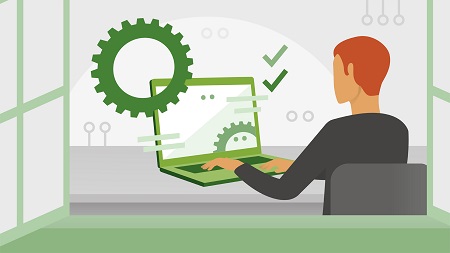
English | MP4 | AVC 1280×720 | AAC 44KHz 2ch | 1h 35m | 220 MB
Being able to administer a Windows machine is a key skill for any Windows administrator. Keep your skills sharp and up to date with this Windows 10 administration training. Martin Guidry takes a detailed look at the operating system, focusing on the administrative tasks necessary for keeping Windows 10 in tiptop shape.
Martin first reviews the various desktop versions of Windows 10. This section covers the special features included with the Enterprise edition, as well as the hardware requirements for some of the new Windows 10 features. Martin also explains installing and updating drivers and configuring and optimizing the OS. Then it’s a deep dive into Group Policy, including working with local groups and troubleshooting Group Policy. Martin also looks at Windows security—authentication and encryption—as well as the boot process, and concludes the course with a brief look at virtualization, networking, and backup and recovery.
Table of Contents
1 About the summer 2020 update
2 Welcome
3 What you should know before starting
4 Understanding the desktop versions of Windows 10
5 Understanding Windows 10 features requiring specialized hardware
6 Overview of the settings interface
7 Administering multitasking
8 Installing and updating drivers
9 Working with notifications and actions
10 Overview of Group Policy
11 Working with the Local Group Policy
12 Troubleshooting Group Policy
13 Adding domain users to a Windows 10 PC
14 Adding Microsoft accounts to a Windows 10 PC
15 Adding local accounts to a Windows 10 PC
16 Setting up assigned access
17 Administering BitLocker
18 Working with EFS
19 Understanding the boot process
20 Working with Measured Boot
21 Installing Client Hyper-V
22 Running Windows 10 as a VDI
23 Using the Windows 10 network settings
24 Using Control Panel to manage Windows Firewall
25 File History
26 Reset this PC
27 Creating a system image backup
28 Overview of backups in Windows 10
29 Best practices for backups and restores
30 Using log files to troubleshoot Windows 10
31 Using Resource Monitor to diagnose performance bottlenecks
32 Troubleshooting network problems
33 Next steps
Resolve the captcha to access the links!